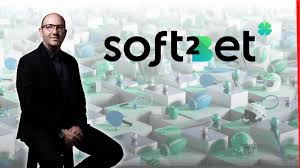Revolutionizing Play The Impact of the Cloud-Native Gaming Platform

Revolutionizing Play: The Impact of the Cloud-Native Gaming Platform
In recent years, the gaming industry has seen an unprecedented shift towards cloud-native gaming platform Soft2Bet casinos cloud-native gaming solutions. This transformation is driven by the increasing demand for seamless, scalable, and flexible gaming experiences. As players seek more engaging and accessible ways to enjoy their favorite games, game developers and providers are turning to cloud-native infrastructures to meet these expectations. This article delves into what a cloud-native gaming platform is, its architectural components, the benefits it offers, and its potential future within the gaming landscape.
Understanding Cloud-Native Gaming Platforms
A cloud-native gaming platform is a modern architectural approach that utilizes cloud computing benefits. These platforms are designed from the ground up to leverage cloud environments, focusing on microservices, containers, and continuous integration/continuous delivery (CI/CD) methodologies. This architecture allows for rapid development cycles, easier scaling, and improved resilience compared to traditional gaming platforms.
Key Architectural Components
The architecture of a cloud-native gaming platform typically consists of several key components:
- Microservices: By breaking down applications into smaller, independent services, developers can update and deploy features independently without impacting the entire system. This modularity fosters innovation and speeds up the development process.
- Containers: Containers provide a lightweight method of deploying applications in a cloud-native environment. They encapsulate the application code and its dependencies, ensuring consistency across different deployment environments.
- Serverless Computing: This model abstracts infrastructure management away from developers, allowing them to focus on writing code. Serverless functions can automatically scale based on demand, making them ideal for handling spikes in user activity.
- APIs and Event-Driven Architecture: Cloud-native platforms often use RESTful APIs to communicate between services. Additionally, event-driven architecture using message queues and streaming services enables systems to respond to events in real time.

Benefits of Cloud-Native Gaming Platforms
The shift to cloud-native gaming platforms offers numerous advantages:
- Scalability: Cloud-native architectures can easily scale to accommodate changing player loads. This is particularly important in gaming, where spikes in user activity can occur suddenly, such as during the launch of a new game or a special event.
- Cost Efficiency: By employing a pay-as-you-go model, game developers can significantly reduce their infrastructure costs. They pay only for the resources they use, which can be particularly beneficial for startups and indie developers.
- Faster Time-to-Market: The flexibility of cloud-native approaches allows developers to quickly iterate on features and bring their games to market faster than ever before. CI/CD pipelines enable rapid testing and deployment of new content.
- Enhanced Player Experience: With reduced latency and improved uptime resulting from reliable cloud services, players enjoy smoother experiences. Features like cross-platform play and mobile access are more easily supported.
Future of Cloud-Native Gaming Platforms
The future of cloud-native gaming platforms appears promising. As technology continues to evolve, we can anticipate several trends and developments:
- Increased Adoption of AI: Machine learning and artificial intelligence will play a growing role in enhancing player experiences, whether it’s through personalized content recommendations, smarter NPCs, or dynamic difficulty adjustments based on player performance.
- Emergence of Edge Computing: By processing data closer to the player, edge computing can reduce latency even further, providing an experience that feels more responsive and immersive.
- Expansion of Cross-Platform Play: Cloud-native environments simplify the development of games that can be played across various platforms, including PC, console, and mobile. This trend will likely lead to a more unified gaming community.
- Focus on Sustainability: As gaming companies become increasingly aware of their environmental impact, cloud-native architectures can facilitate more sustainable practices through energy-efficient data centers and streamlined resource usage.
Conclusion
The emergence of cloud-native gaming platforms marks a significant shift in the gaming industry. By embracing this new architecture, developers are well-positioned to meet the evolving demands of players, create innovative experiences, and respond to the challenges of an increasingly competitive market. As cloud technology continues to advance, we can expect cloud-native platforms to shape the future of gaming in exciting and transformative ways.